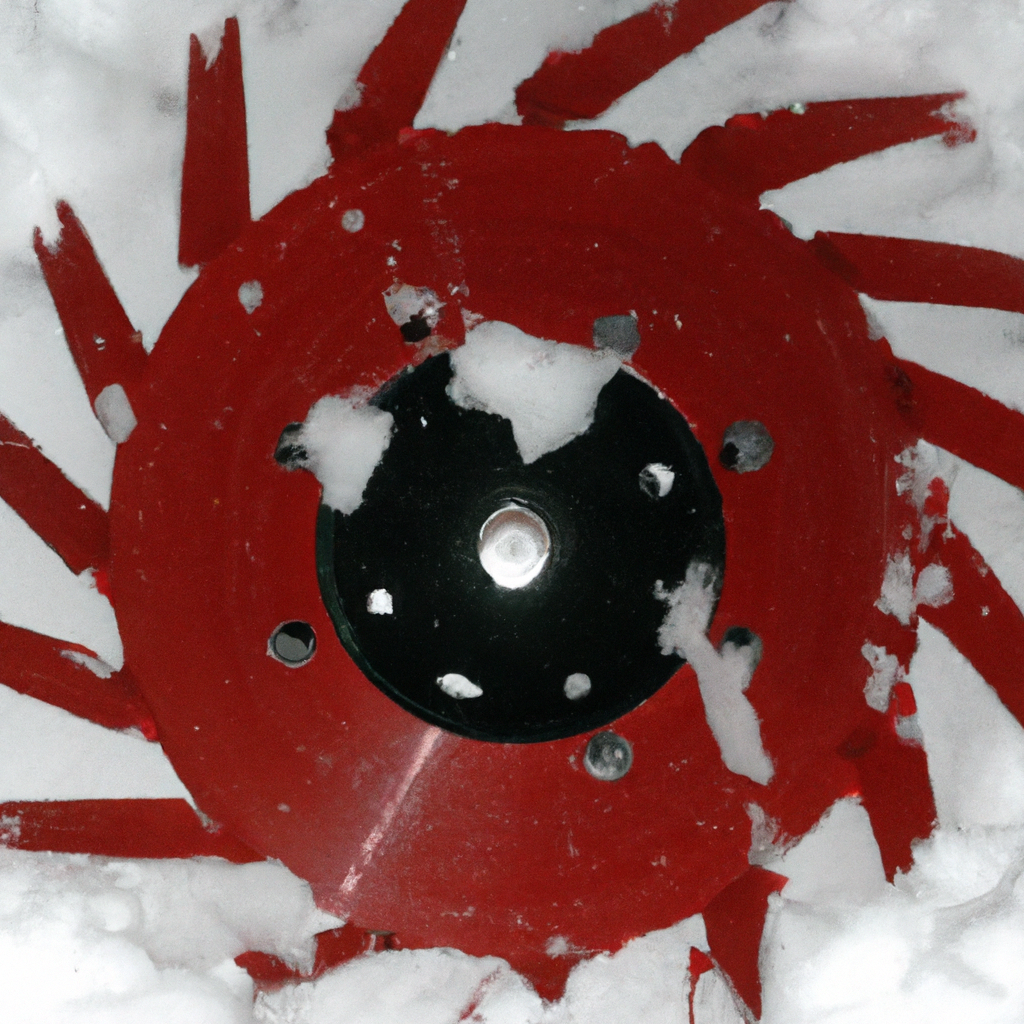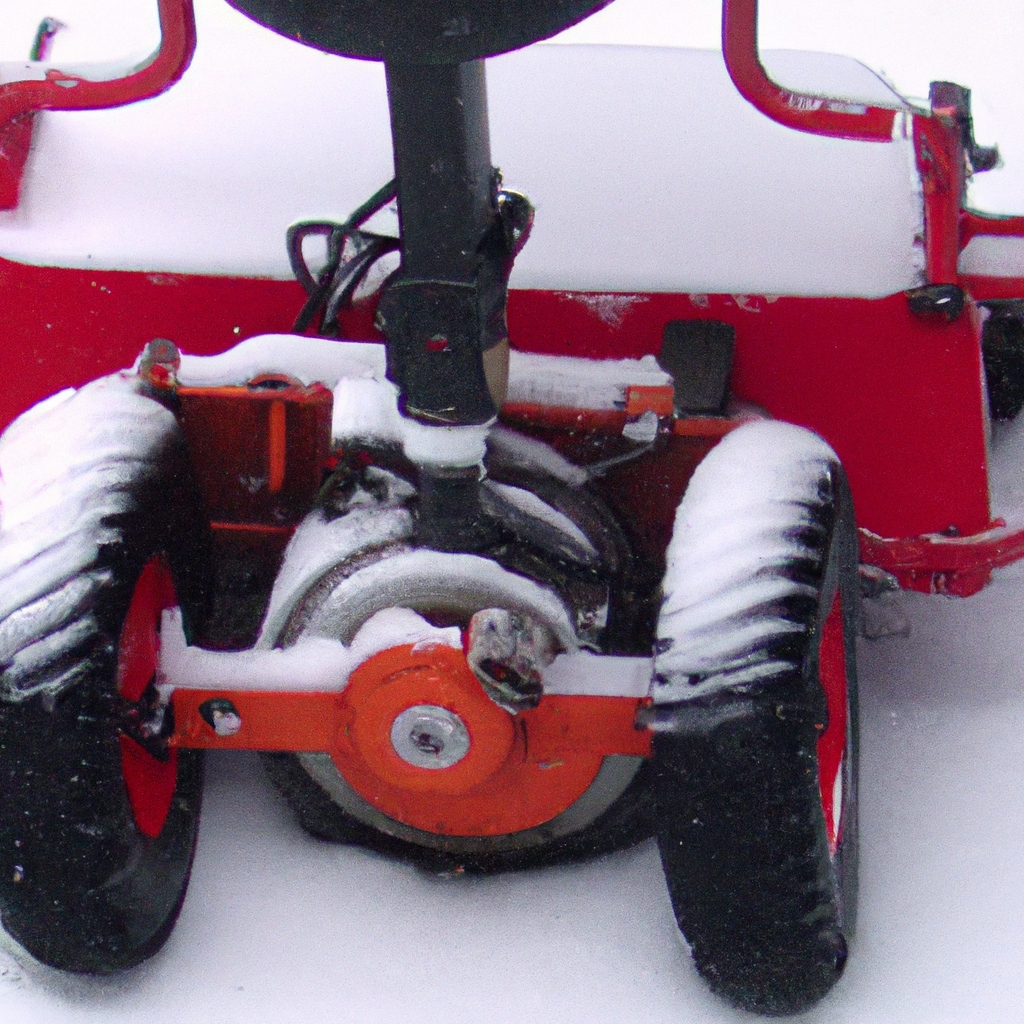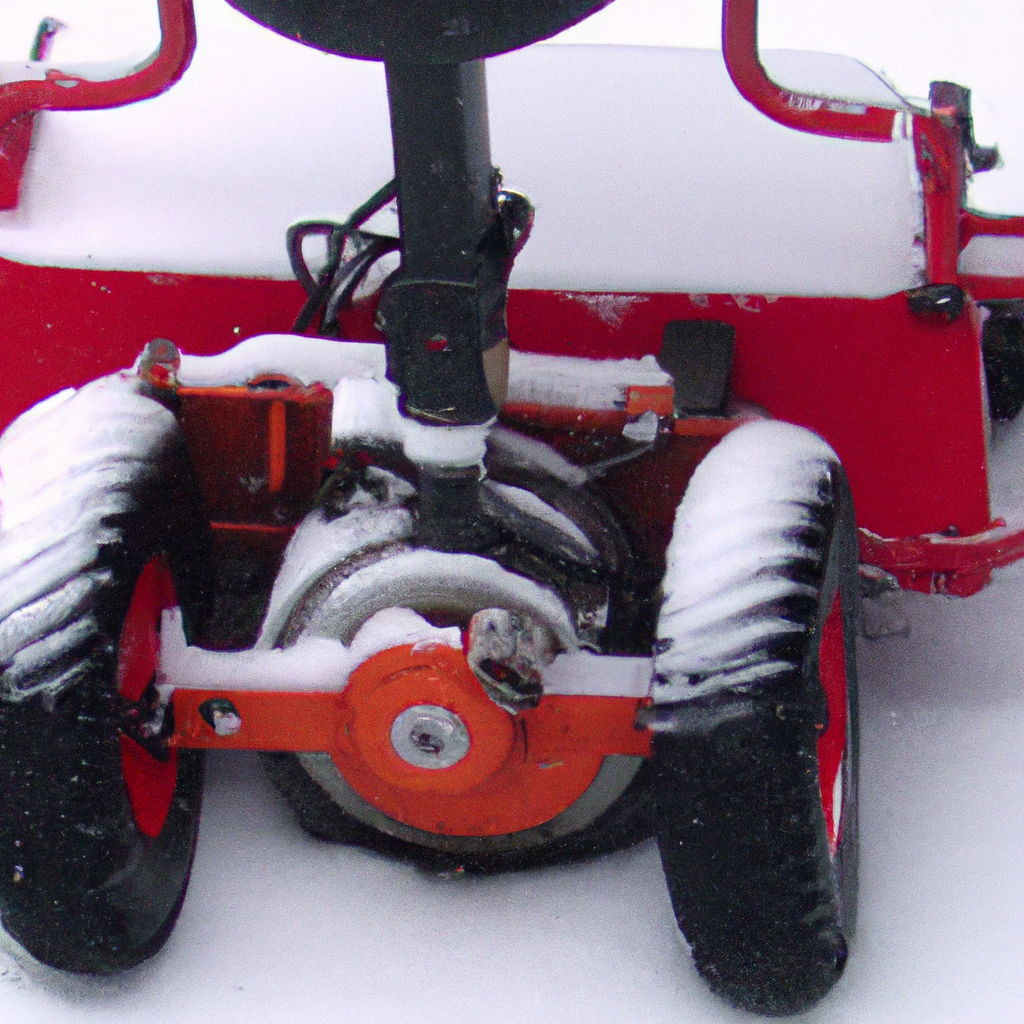We're an affiliate
We hope you love the products we recommend! Just so you know, we may collect a share of sales or other compensation from the links on this page. Thank you if you use our links, we really appreciate it!
Alright, let’s talk snowblowers! If you’ve ever found yourself in the midst of a snowy winter, you’re probably familiar with the trusty snowblower. But have you ever wondered how to properly use the choke on this handy machine? Well, wonder no more! In this article, we’ll shed some light on the right way to use the choke on a snowblower, ensuring that you can tackle the snow with ease and keep your machine running smoothly. Plus, we’ll answer the burning question of how long to leave the choke on your snowblower. So, grab a cup of hot cocoa, sit back, and let’s dig into the wonderful world of snowblowing!

Overview of the Choke on a Snowblower
What is the choke?
The choke is a mechanism found on snowblowers that controls the airflow and fuel mixture going into the engine. It is designed to help start the engine in cold weather conditions or after refueling by providing a richer fuel mixture.
Why is the choke important?
The choke plays a crucial role in starting the snowblower’s engine, especially in cold weather. By restricting the airflow and enriching the fuel mixture, the choke helps the engine start and run smoothly, preventing stalling or difficulty in starting.
How does the choke work?
The choke works by adjusting the air-to-fuel ratio in the engine’s combustion chamber. When the choke is engaged, it restricts the airflow, causing a fuel-rich mixture to be supplied to the engine. This makes it easier to ignite the fuel and start the snowblower. Once the engine is running smoothly, the choke can be gradually disengaged to allow for a normal air-to-fuel ratio.
Understanding When to Use the Choke
Cold starting the snowblower
When starting a snowblower in cold weather, it is essential to engage the choke. Cold temperatures can make it difficult for the engine to ignite the fuel properly. By using the choke, you provide the engine with a richer fuel mixture, making it easier to start.
Starting the snowblower after refueling
After refueling your snowblower, it’s a good practice to engage the choke when starting the engine. This helps to prime the engine and ensure a smooth start after the fuel supply has been disrupted.
Starting the snowblower after extended storage
If you haven’t used your snowblower for an extended period, such as during the offseason, engaging the choke can be helpful. This is because the fuel in the carburetor may have evaporated, and the engine needs a richer fuel mixture to start easily.
Operating the snowblower at high altitudes
At high altitudes, the air is thinner, which can affect the engine’s performance. Engaging the choke helps compensate for the reduced air density by supplying a richer fuel mixture for proper combustion.
Step-by-Step Guide to Using the Choke
Locating the choke
Before starting your snowblower, locate the choke lever. It is usually located near the engine or on the control panel of the machine. Refer to the snowblower’s manual if you’re unsure of its exact location.
Preparing the snowblower for starting
Ensure that the snowblower is on a flat, stable surface and that the ignition switch is in the “off” position. Make sure there are no obstacles in the way and that you have appropriate protective gear, such as eyewear and gloves.
Engaging the choke
To engage the choke, move the choke lever or switch to the “on” or “choke” position. This restricts the airflow and enriches the fuel mixture, preparing the engine for starting.
Starting the snowblower
Follow the snowblower’s starting procedure, which typically involves pulling a starter cord or pressing an electric start button. Keep a firm grip on the handle and use smooth, controlled movements.
Adjusting the choke during operation
Once the engine has started and is running smoothly, gradually disengage the choke by moving the lever or switch to the “off” position. This allows for the proper air-to-fuel ratio and optimal engine performance.
Common Mistakes to Avoid
Using the choke unnecessarily
One common mistake is using the choke when it is not needed, such as during warm weather or when the engine is already warm. This can cause an excessively rich fuel mixture, leading to poor performance and increased fuel consumption.
Leaving the choke on for too long
Leaving the choke engaged for an extended period can result in an overly rich fuel mixture, causing the engine to run roughly or even stall. As the engine warms up, gradually disengage the choke to maintain an appropriate air-to-fuel ratio.
Not using the choke when necessary
Neglecting to use the choke when starting the snowblower in cold weather or after refueling can make it difficult to start the engine. Always refer to the snowblower’s manual and follow the recommended starting procedure, including the use of the choke if necessary.

Additional Tips for Proper Choke Usage
Understanding the weather conditions
Take into account the ambient temperature and weather conditions when determining whether to use the choke. In colder temperatures, the choke may be necessary for starting, while in warmer weather, it may be unnecessary.
Keeping the snowblower well-maintained
Regular maintenance of your snowblower, including cleaning or replacing the air filter and ensuring the fuel system is clean, can help optimize choke performance and overall engine operation.
Practicing with the choke
To become familiar with your snowblower’s choke mechanism, practice starting the engine in various weather conditions. This will help you understand how the choke affects engine performance and gain confidence in using it effectively.
Seeking professional help if needed
If you encounter persistent issues with your snowblower’s choke, such as difficulty starting or engine stalling, it is advisable to seek assistance from a professional technician. They can diagnose and troubleshoot any underlying problems to ensure the choke operates correctly.
Troubleshooting Choke Related Issues
Difficulty starting the snowblower with the choke
If you’re having trouble starting the snowblower despite engaging the choke, check other factors like the spark plug, fuel quality, or blockages in the fuel system. It’s also essential to ensure the choke is operating correctly and not stuck in one position.
Snowblower stalling after choke disengagement
If the snowblower stalls shortly after disengaging the choke, it may indicate an issue with the carburetor or fuel system. Inspecting and cleaning the carburetor, fuel filter, and fuel lines can help resolve this issue.
Excessive fuel consumption due to choke problems
If the snowblower is consuming more fuel than usual, it could indicate a problem with the choke. An improperly adjusted or malfunctioning choke can lead to an overly rich fuel mixture and increased fuel consumption. Consult a professional technician to address this issue.
Safety Measures and Precautions
Read the snowblower manual
Before using a snowblower or adjusting the choke, thoroughly read and understand the manufacturer’s instructions provided in the manual. Familiarize yourself with the specific safety guidelines and precautions for your model.
Wear appropriate protective gear
Always wear appropriate protective gear when operating a snowblower, including goggles or safety glasses, gloves, and sturdy footwear. This will help protect you from flying debris and ensure your safety during operation.
Ensure proper ventilation during operation
To prevent the build-up of carbon monoxide fumes, always operate the snowblower in a well-ventilated area. Avoid using the machine in enclosed spaces or areas with poor air circulation.
Avoid contact with moving parts
Be cautious around the snowblower’s moving parts, such as the auger and impeller. Keep your hands and feet away from these areas to prevent injury. Never attempt to clear a clog or perform maintenance while the engine is running.
Conclusion
Understanding how to properly use the choke on a snowblower is essential for smooth operation and starting in various conditions. By following the recommended guidelines and properly engaging and adjusting the choke, you can ensure an optimal air-to-fuel mixture and maintain the performance of your snowblower. Remember to always prioritize safety and seek professional help if you encounter persistent issues or difficulties. Stay safe and enjoy using your snowblower to efficiently clear away snow and keep your pathways clear.

